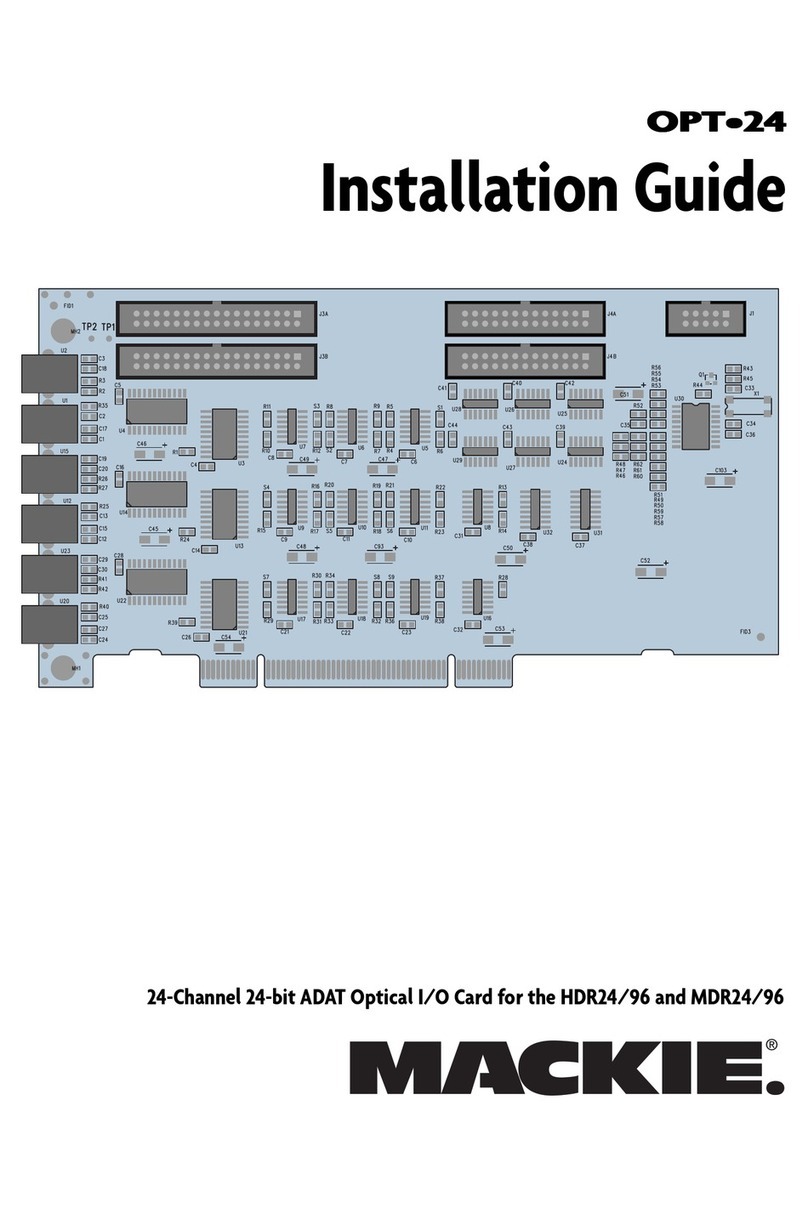
with the console's mounting
holes.
7. Hand-insert one collar
piece into each side, with
the “teeth” pointing out
(C). Occasionally, the end
caps of the Console will try
to interfere with
this step. Don't get
upset. Simply loosen the CONSOLE end
cap screws, install the collar and then re-
tighten the screws.
8. Turn the collars by hand until you feel the
pin seat itself (it will stop turning).
9. Slide one lockwasher onto each allen-head
screw.
10. Secure the collars by inserting an Allen-
head screw on each side (C). Take care not
to cross-thread the screws or strip the
screwheads. Tighten the Allen screws
securely.
11. Using a hefty screw driver, install a flush
screw almost all the way into each side
(Drawing D at right).
12. Raise the Meter Bridge as far forward as it
will go.
13. On the Console, locate the rubber plugs
that cover the Meter Bridge ribbon cable
MB•16 Meter Bridge
MB•E Meter Bridge
MB•24 Meter Bridge
MB•32 Meter Bridge
C
D
E
sockets. The 32•8 has five; the 24•8 has
four; the 16•8 and MB•E each have three
(see epic MondoDrawing E at the top).
14. Remove the rubber plugs and feed them to
the afore-mentioned boa constrictor.
13. Making sure that the plug and socket are
aligned, firmly insert each ribbon cable into
its corresponding socket in the Console (F).
Take care to make sure that the cable is
not
twisted 180˚(sounds insulting to caution
you against something like this, but we've
seen it done.) Unless your fingers are
microminiature, you'll probably need to use
the eraser end of a pencil to press down on
the plug and make sure that it is fully
seated (G).
16. Slide the new improved, slotted rubber
plugs (that are pre-attached to the ribbon
cables) down until they fit snugly into the
rectangular Console holes (Drawing H).
17. Adjust the Meter Bridge to the desired
angle and tighten the screws.
18. Make yourself a sandwich. Wash hands
before returning to work.
pin down






















